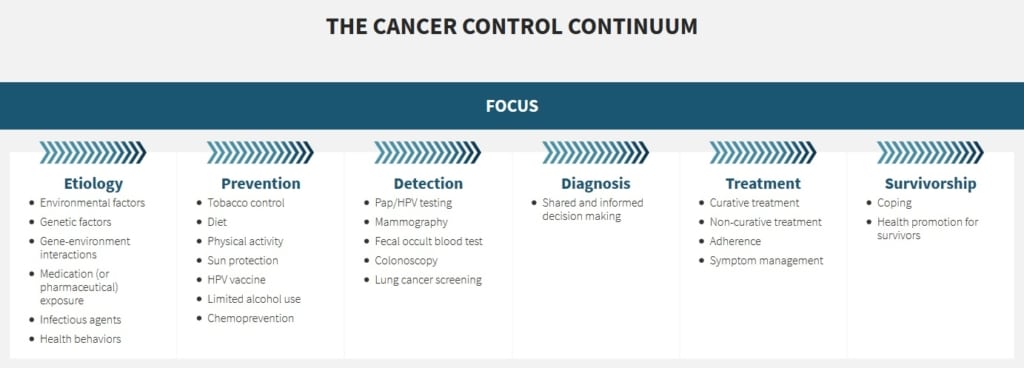Cancer incidence and trends
The National Cancer Institute lists more than 100 kinds of cancer.1National Cancer Institute. Cancer Types. Viewed January 13, 2022. Their incidence varies by country, region, gender, age and occupation. In the US, men and women have about a one-in-three chance of developing cancer in their lifetimes. Childhood cancer is rare but it is the leading cause of death by disease in children past infancy.2American Cancer Society. Lifetime Risk of Developing or Dying From Cancer. January 13, 2020. Viewed January 13, 2022.
Trends in cancer incidence also vary by country; aging populations only partially explain them.3Bray F, Ferlay J et al. Global Cancer Statistics 2018: GLOBOCAN Estimates of Incidence and Mortality Worldwide for 36 Cancers in 185 Countries. CA: A Cancer Journal for Clinicians. 2018 Nov;68(6):394-424. More importantly, changes in individual behavior, environmental, nutritional, biologic, and social risk factors collectively cause increases in some kinds of cancer and decreases in others.
Cancer control
Cancer control begins with prevention and extends through detection, diagnosis, and treatment. With so many kinds of cancer, the specific details for each stage vary considerably, but some concepts generally apply to all.4National Cancer Institute. Cancer Control Continuum. September 24, 2020. Viewed January 13, 2022.

Cancer prevention advice for various kinds of cancer is based on knowing or assuming that reducing established or suspected etiologicEtiology is the study of causation or origin; etiologic factors relate to the causes or origin of disease. risk factors will lead to a reduction in cancer incidence. We know this is true, for example, with tobacco smoking and lung cancer incidence. Sometimes though, the evidence may not be as strong—particularly when multiple causes each contribute more modestly to cancer risk, but collectively they add up to explain the origins of particular cancers.
Substantial evidence shows that avoiding tobacco smoke, limiting alcohol use, maintaining a healthy body weight, regular physical activity, and eating a healthy diet starting early in life reduce the risk of many kinds of cancer.5American Institute for Cancer Research. How to Prevent Cancer: 10 Recommendations. Viewed January 13, 2022.
Sun protection reduces skin cancer risk, and hepatitis B vaccination reduces liver cancer risk. Beyond these individual behavioral choices, however, other important opportunities for cancer prevention include reducing air pollution (a risk factor for lung and bladder cancer) and eliminating exposures to cancer-causing chemicals in drinking water, food, homes, the workplace and general environment.6President’s Cancer Panel. 2008-2009 Annual Report: Reducing Environmental Cancer Risk: What We Can Do Now. National Cancer Institute. April 2010. This means that cancer prevention is also a responsibility of public health policies and practices.
These risk factors not only act independently but also interact, across the life course, collectively creating conditions that are more or less favorable for cancer to develop. Addressing them collectively as individuals, families, and communities, and also through public policy will have the greatest benefits.
An extensive range of complementaryin cancer care, complementary care involves the use of therapies intended to enhance or add to standard conventional treatments; examples include supplements, mind-body approaches such as yoga or psychosocial therapy, and acupuncture interventions that can be added to conventional cancer therapies are discussed in detail on this website. The effectiveness of many approaches and therapies may be specific to the tumor or person. Thoughtful evaluation in key.
But just as with cancer prevention, some general themes are broadly applicable. For example, the discussion of the body terrain and tumor microenvironment and 7 Lifestyle Practices are notably consistent with the general idea of an ecological approach to cancer prevention. Create the systems conditions in which cancer is less likely to develop and which improve the outcome when it does.7Schettler, Ted. The Ecology of Breast Cancer: The Promise of Prevention and the Hope for Healing. Science & Environmental Health Network and Collaborative on Health and the Environment. 2014.
Ecologic framework of health
In addition to cancer prevention and treatment, an ecologic framework of health can also help us to understand more clearly trends in asthma, neurodevelopmental disorders, diabetes, obesity, autoimmunity and other complex diseases of our time. Single cause-and-effect relationships rarely explain them.Rather, the way we live, eat, move around, relate to one another, make and use consumer products, and interact with the natural world and resources together strongly influence health and disease patterns. Interactions among progressively nested individual-, family-, neighborhood-, community-, economic-, political- and societal-level variables are all involved.
We have a long history of simplifying complex problems into more manageable pieces to study them and deciding how to respond. That’s understandable, but if it prevents us from reassembling the pieces and recognizing them as systems problems requiring systems-level responses, this approach is not enough. Multi-level interventions can be combined in integrated disease-prevention strategies, just as integrated approaches to care and treatment of complex disorders holds promise for improved outcomes. Those are the challenges and opportunities.
Helpful link
Learn more
References
Dr. Schettler is science director of the Collaborative on Health and the Environment and the Science and Environmental Health Network and author of The Ecology of Breast Cancer. He has worked extensively with community groups and non-governmental organizations throughout the US and internationally, addressing many aspects of human health and the environment. He has served on advisory committees of the US EPA and National Academy of Sciences. He is co-author of Generations at Risk: Reproductive Health and the Environment, which examines reproductive and developmental health effects of exposure to a variety of environmental toxicants. He is also co-author of In Harm’s Way: Toxic Threats to Child Development, which discusses the impact of environmental exposures on neurological development in children, and Environmental Threats to Healthy Aging: With a Closer Look at Alzheimer’ and Parkinson’s Diseases.
